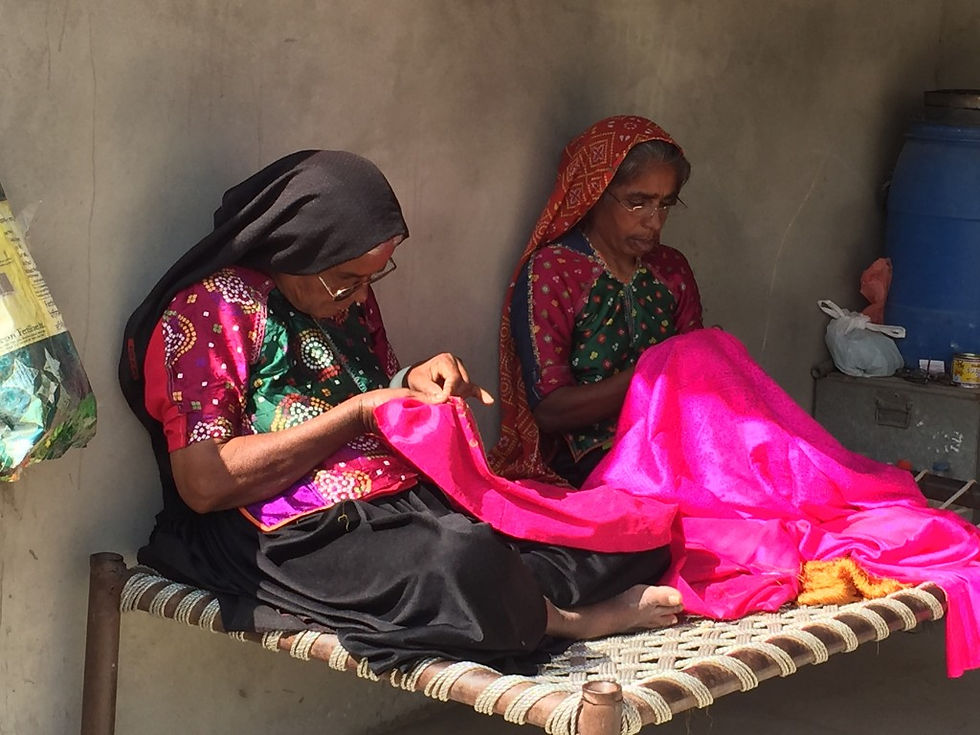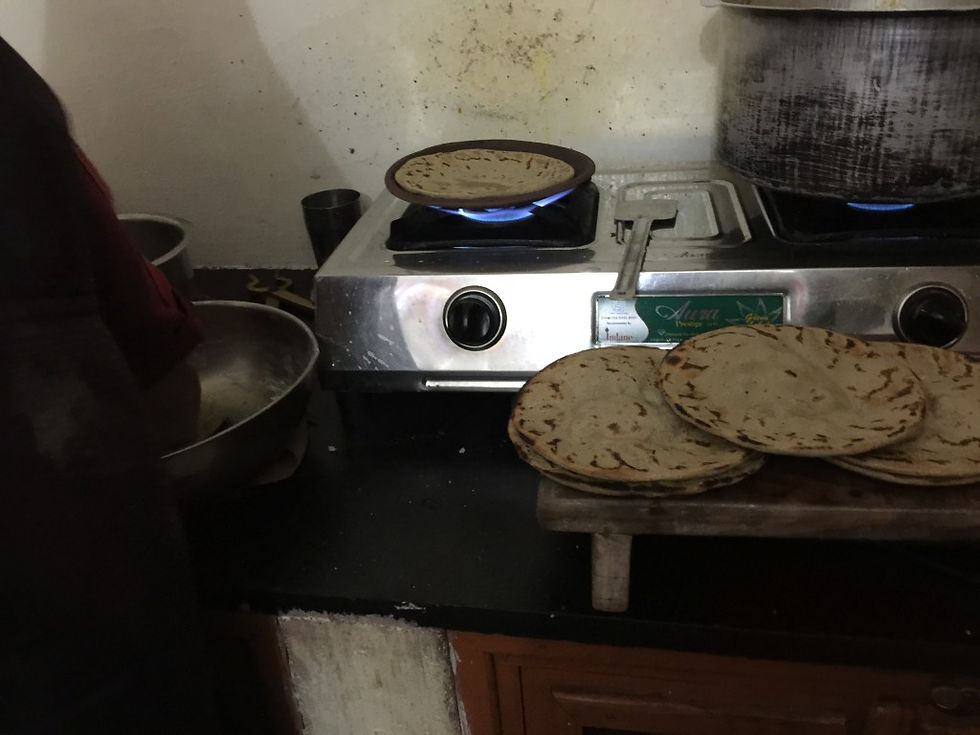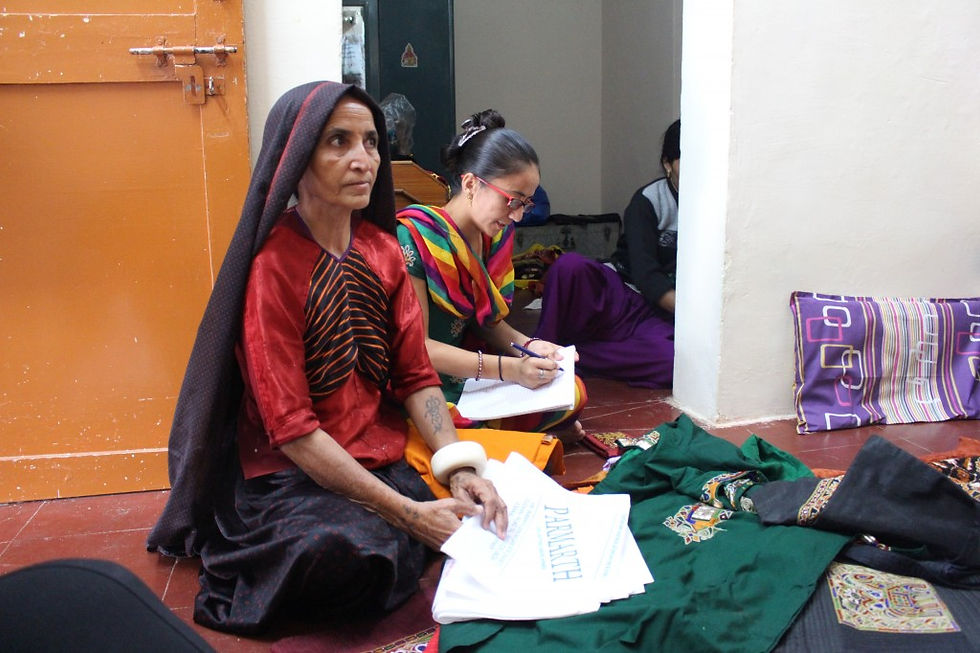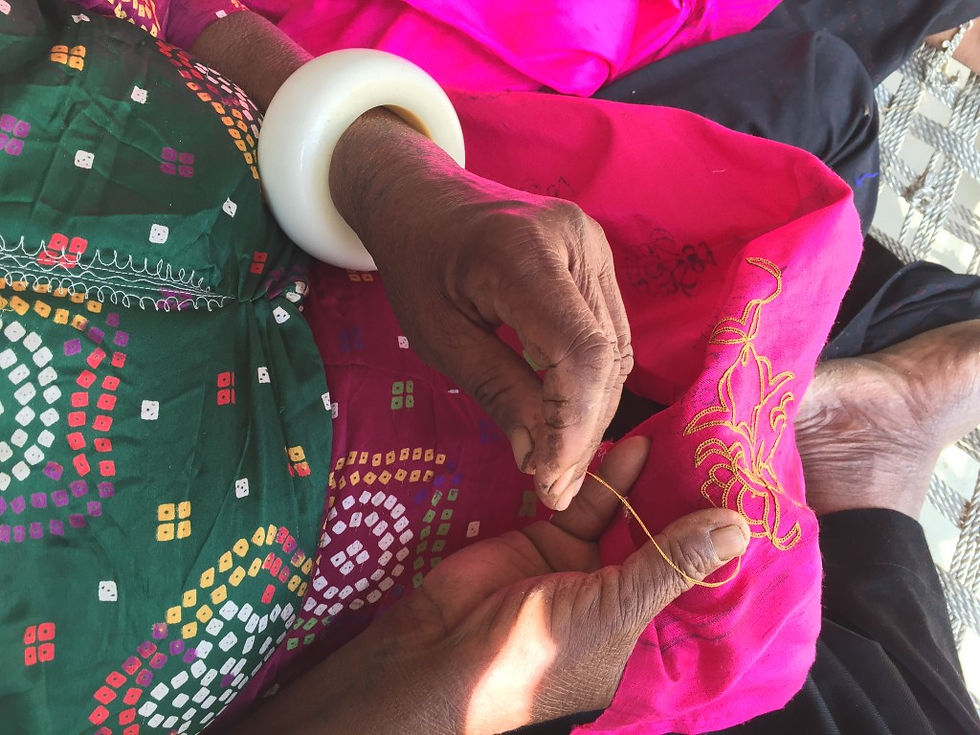Souvenirs from the Kutch Desert
- Saima Desai
- Sep 6, 2015
- 3 min read

Many centuries ago, two Indian territories fought a long and vicious war. As the dust settled, the new king executed the defeated king. His newly widowed queen feared that the victorious king would also kill her son, the prince. That night, after the sun had set over the blood-soaked earth, the queen summoned her most trusted maid, an Ahir woman named Dhuna Makwani. She begged Dhuna to hide the prince. Dhuna Makwani, who had a son of the same age as the prince, swore an oath to the widowed queen that she would protect the prince like her own son.
Under the new king, no corner of the land was safe. His spies combed every village and mud hut until they discovered young prince’s whereabouts. They demanded the prince be handed to meet his death. Dhuna Makwani was forced to choose between the ultimatum and her loyalty to her old masters.
With a heavy heart, she disguised her own son in the prince’s finery, and sent him in the prince’s place.
After the execution, the new king summoned Dhuna Makwani. He knew she had a similarly aged son. The king had the boy’s lifeless body brought in. “Walk over this corpse.” he ordered. Dhuna obeyed, her head bowed and tears hidden beneath her veil. Suspicious, the courtiers ordered Dhuna to remove the veil. She steeled herself, took off her veil and walked over the body again, this time with dry eyes and an emotionless countenance.
To this day, the Ahir women of Kutch can be identified by their lack of veils in homage to Dhuna Makwani’s sacrifice.
***
The Ahir people live in northern-western India where their principal occupation is cow-herding. More recently, they’ve risen to minor fame as the creators of intricate embroidery. In the last textile tour, E.Y.H.O. groups visited an Ahir village in the desert.
Stepping off our air-conditioned bus, we entered another world. Dust blew in the breeze, and children gathered to giggle at our progress towards huts scattered across a stretch of dry scrubland. On string beds outside the huts sat unveiled women, heads bowed over embroidery. Punctuated by the flash of tiny mirrors, the women’s needles darted and reappeared as if of their own will.

At our hosts’ hut, the women of the house welcomed us. Each was unveiled. In the kitchen, they prepared a typical Kutchi meal: mung dhal, rice and rotla – millet flatbread. A handful of dough was pinched off, and slapped with a metronymic thap-thap-thap until flat. Each disc was then cooked over a little gas flame and smeared with ghee. Across the tiny whitewashed kitchen, a vat of mung dal bubbled away.


Nothing beats fresh rotla and hot mung eaten out of tin plates in the Kutchi desert. We sat on string beds and relished the simple meal. Full-stomached and fingers licked clean, we positioned ourselves on the floor as the women, including a few neighbours, began bringing out their embroidery work. Soon dozens of pieces of exquisite embroidery lay in front of us.

India is not a shy country. It is dazzling and chaotic and alive in a way that defies logic. It often astonishes first-time visitors. But its boldness – including the dirt and noise and vibrancy – veils a culture of intense spirituality and diversity.
The embroidery of Ahir women is representative of India. It’s bold and colourful and unabashed. It is definitely not your grandma’s monogrammed hankie. It demands to be displayed, hung on walls, and worn at weddings. It is treasured and flaunted. Like many of India’s creations, it is birthed from a culture of tradition, painstaking labour, and proud artisanship. The pieces in front of us were embroidered for trousseaus, each stitch imbued with echoes of chatter, laughter, and hopes.

In the hustle of an industrializing nation, the talents of Ahir women were dying out when discerning fashionistas from urban areas discovered them. The urbanites set up grassroots non-profits, and now the sartorial haute crowd is increasingly coveting the Ahir women’s work.
One of the most stunning pieces of work in front of us was a toran, a cloth hanging traditionally strung over doorways to welcome the goddess of prosperity. A group member, Su, fell in love with its intricate mirrorwork. She had to own it. In the end, that toran brought us a whole heap of trouble (story to be continued!), but for Su, it was worth it. She brought home an unusual souvenir: an embroidered work of art whose joie-de-vivre reminds us of the proud Dhuna Mahwani’s sacrifice.

Legend of Dhuna Makwani adapted from http://www.frontline.in/static/html/fl2719/stories/20100924271908700.html
Our beloved textile tour to Gujarat-Kutch-Rajasthan takes off every January. Join us and be entranced!








Comments